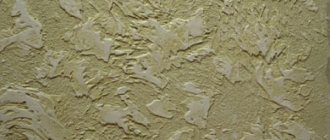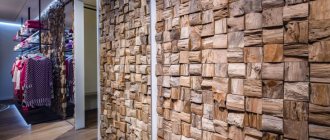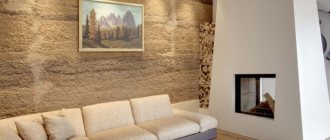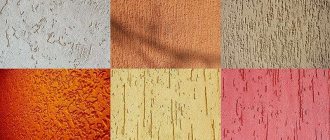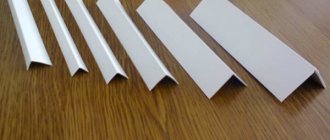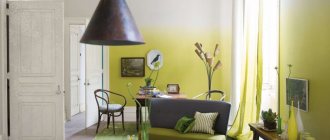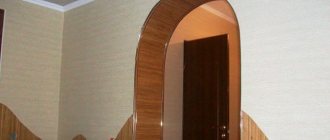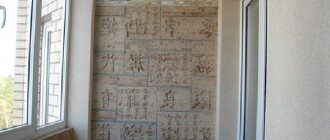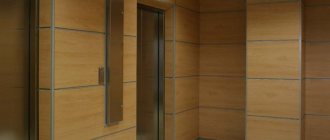What it is?
“Bark beetle” putty is made on the basis of acrylic or gypsum, with the addition of small marble granules or mineral chips, as well as an admixture of a composite mixture. It owes its name to the textured pattern that appears as a result of processing, and the specific size of the added granules determines the graininess of the coating and how the facade will look.
There are two colors for this type of plaster: white and gray. The shade can be changed by adding color during mixing or by painting the already coated surface with acrylic, water-based or silicone paint. There are many images with examples of such solutions. However, the “bark beetle” putty in the photo still does not look as impressive as in reality, so it is better to evaluate the result in person.
Decorative coating "Bark beetle"
High-strength decorative coating “bark beetle” is distinguished by high aesthetics, as well as resistance to negative weather factors and temperature fluctuations. An unusual surface design technique can vary in color thanks to the addition of pigment of any tone.
High-quality wall decoration with bark beetle varies in texture, thanks to the use of different methods of forming “potholes”. The unusual surface, reminiscent of wood eaten by bugs, received a completely understandable commercial name.
The relatively labor-intensive process of applying plaster is compensated by the beauty of its unique texture with some variations. But for this type of cladding it is not necessary to carefully level the surface - small cracks and dents will be hidden by layer-by-layer finishing of the walls with bark beetle.
High-strength decorative coating “bark beetle” is distinguished by high aesthetics, as well as resistance to negative weather factors and temperature fluctuations.
What is it: types and composition, scope of application
The finishing of vertical surfaces with bark beetle compares favorably with other types of decorative plaster. High aesthetics and excellent performance characteristics explain the growing popularity of the versatility of bark beetle wall coverings.
The composition of this decorative plaster varies:
- Acrylic mixtures used for interior decoration (high level of environmental friendliness) do not have harmful additives, they are suitable for living rooms, bedrooms and children's rooms;
- Silicone and synthetic resins provide good protection for walls at high humidity (the surface repels water, mold and mildew do not grow on the walls, which is important in the pool, kitchen and bathroom);
- Silicate varieties are used in rooms without heating, due to their resistance to temperature changes (hallway, corridors, passages and flights of stairs);
- Frost-resistant cement-based compositions - for external cladding (building facades).
Dry plaster contains a lot of gypsum; it is diluted with water immediately before covering the walls (gypsum hardens quickly). It is important to keep the proportion exactly. After starting work, the paste can be made thinner, but the difference will be noticeable.
Dry plaster contains a lot of gypsum; it is diluted with water immediately before covering the walls.
There are two types of plaster:
- Dry mixture (available in small bags, the composition and proportion of dilution with water is indicated on the packaging).
- Thick paste, ready to apply.
Before applying bark beetle to the wall, it is important to clarify the composition. The basis of any plaster is a cement mixture, to which lime and other inclusions are added. In some, polymers (acrylates) predominate, while in other compositions there is a large percentage of gypsum. The easiest way is to buy ready-made plaster and apply it, carefully working out every square meter.
More cement is added to the façade finishing to ensure resistance to aggressive external factors. Instead of sand, gypsum and polymers are added to plaster for interior cladding to lighten the composition. This is important for buildings that shrink, as well as for country houses on unstable soils.
The pattern and grain size of the plaster depends on the size of the inclusions, the filling of the working mass with them and how the master works with the trowel. It is not advisable to add solid crumbs with a diameter greater than 3.5 mm.
Each group of finishers has its own “secret” composition for the bark beetle wall. This type of plaster contains solid particles of different diameters, due to which the effect of potholes varies. The granules are removed upon completion of work.
More cement is added to the façade finishing to ensure resistance to aggressive external factors.
Advantages and disadvantages
Decorative plaster "bark beetle" is characterized by increased resistance to environmental influences. If the application was technologically correct, then it will easily withstand any temperature changes and other atmospheric influences.
Other benefits include:
- budget cost;
- ease of use, even from the point of view of a person who has no experience working with this material;
- fire-resistant properties;
- environmental friendliness, due to the fact that only natural components were used in the manufacturing process;
- lightness, which avoids excessive loading of the overall frame;
- UV resistance, which means you don’t have to worry about rapid fading;
- resistance to mechanical and mild chemical influences, mold and water-based solutions (depending on the specific type of coating, the qualities are manifested to a greater or lesser extent).
The only disadvantage that bark beetle putty has is the difficulty of subsequent processing. Painting textured, corroded wood-like irregularities will require some effort. However, if you have the proper patience, this will not cause any special problems.
The nuances of creating a textured decorative surface
The shape of the pattern on the finished finish is determined by the nature of the movements that are made with a trowel on the plastered base. The classic ornament of wood affected by the bark beetle is formed as a result of arched, circular, uneven movements of the tool in different directions, during the process it must be slightly pressed.
Shape of bark beetle pattern on the wall
The imitation of rough stone, also called travertine, is obtained through short, jerky manipulations, and the trowel must be moved in different directions. The cork ornament is made using a smoothing tool: a tool made of polystyrene foam is intensively moved in a circle with a small radius. The imitation of woven fabric is created by moving the grater crosswise: vertical strokes are formed with a slow and drawn-out movement from bottom to top, horizontal strokes with an energetic short stroke.
The rain-like pattern is formed as a result of continuous long diagonal movements of the grater from top to bottom, starting from the upper right corner. Bark beetle plaster can also be applied in the image of a world map: the first layer is rubbed in the classical way, after it has dried, the second is applied unevenly, making strokes in different directions. The latter are smoothed with a Venetian trowel.
Varieties of bark beetle plaster
Depending on the base used in the manufacture, bark beetle putty is divided into two types:
Acrylic
It has a more presentable appearance, but to achieve a similar effect you need to master the application technique, which is not entirely simple. Therefore, it will not be possible to do without the participation of a master. You can buy this type of facing material already diluted (in a bucket). This is convenient in terms of saving time. In addition, it is believed that this type is more stable and requires less material consumption.
Plaster
More practical because it is provided in the form of a dry mixture. There are several more reasons to purchase the mixture in this format:
- Less overall weight and lower cost;
- Involves a simple method of application;
- Easier to paint (does not require the use of specialized machines).
- 1 bag of this plaster (25 kg) is enough to finish 6-8 square meters.
There is another classification - according to the size of the grain used in the plaster: 1.5 - 2 - 2.5 - 3 mm. The choice of a certain number from this gradation depends solely on personal preferences and the desired design effect.
Criterias of choice
The basic selection criterion is the type of base. Concrete surfaces are finished using cement-lime and cement mortars; there are no restrictions for brick surfaces. To improve the adhesion of both types of surfaces, a reinforcing mesh is applied to a 5 cm layer of the mixture.
Wooden walls are finished using lime-gypsum mortars, where clay can be added as a plasticizer.
It is important to comply with the permissible norm of the last component so that cracks do not form on the finished surface. Plastering a wood base also involves the use of reinforcing mesh.
Decoration of gypsum blocks is carried out using lime-gypsum or gypsum types of plaster; reinforcing mesh is not required. The use of cement mortars is highly undesirable here.
It is most difficult to work with gas and foam blocks, as they are characterized by low adhesion. To achieve reliable and long-term adhesion of materials, it is advisable to fill the surface with a special mesh and use mixtures with strengthening additives.
When choosing a finishing material, most experts prefer gypsum compositions, as they exhibit optimal performance characteristics. This type of bark beetle does not shrink and cracks do not form on it. The material has high sound and heat insulation properties. The only limitation: the gypsum mixture cannot be applied to concrete walls, it will quickly fall off, and it also requires high-quality preliminary waterproofing of the base.
How to choose the right plaster
Decorative bark beetle plaster has several varieties; to make the right choice among the many options, you should study the grain size and type of each of those that are on hand. The grain size in this case affects the size (depth and width) of the resulting grooves, and therefore the overall texture.
In addition, you will have to take into account: the larger the grain size in the mixture, the greater the consumption of the plaster itself.
Regarding the acrylic or gypsum base, everyone chooses at their own discretion:
- Acrylic: more expensive and more complex in application technique, but does not require time to dilute the solution and is more stable after application.
- Plaster: cheaper and easier to apply, not inferior in appearance to the acrylic version.
Tools and materials
The first step is to select beacon limiters, which are plastic or metal profiles with holes. Their depth varies between 6-10 mm, the standard length is 3 m. The shape can be L or T-shaped.
Basic working tools:
- putty knife;
- self-tapping screws;
- rule;
- metal scissors;
- plumb line;
- dowels;
- roulette;
- level;
- foam and plastic graters;
- perforator with a nozzle for mixing the solution.
In order to apply the bark beetle to the wall you will need a spatula.
The lime mixture is formed from lime and sand in proportions 1:4, 1:3, 1:2; cement - made of cement and sand in ratios 1:2 or 1:3. The clay working mixture includes 1 part clay and 3-5 parts sand, the gypsum solution is mixed from lime and gypsum, 1 part and 2 parts sand.
Construction tape will be a convenient auxiliary material. With its help, you can divide a large wall into several working sections, protect the surrounding surfaces from plaster, pause work by gluing the outermost strip, and then start from the same place by cutting off a strip of mortar.
Where can it be used
As mentioned above, bark beetle plaster can be used for interior and exterior work. In addition, depending on the application technique and subsequent processing, patterns can be formed that are suitable for absolutely any interior. Additional variations are provided by painting.
If we talk about a material suitable for applying plaster and providing sufficient adhesion, then this includes:
- stone;
- brick;
- concrete;
- drywall;
- cement-sand plaster;
- Chipboard.
Bark beetle plaster is not intended to correct defects in the surface being treated. However, it can be used as thermal insulation. This is another advantage that decorative bark beetle plaster has; how to apply it correctly will be discussed in the next section.
Preparatory stage
Before applying bark beetle plaster, you need to clean the base surface from greasy stains, dust and dirt, and old finishes. Cracks and defects are leveled using lime, gypsum, and cement mortar. In the process of sealing large seams, they are widened with a grinder and filled with gypsum putty. Walls in areas with high humidity levels are coated with antifungal compounds.
To improve adhesion, apply a thick acrylic primer to the surface using a brush, roller or spray gun. This composition will help adjust the absorbency of the base and speed up the uniform drying of the bark beetle. This measure is not necessary for cement-lime and concrete walls; here it is enough to wet the surface with water an hour before starting work.
Application technology
First you need to prepare all the necessary tools and materials:
- plastic grater;
- container for solution;
- drill and mixer attachment for it;
- spatula (preferably stainless steel).
The entire scope of work can be divided into 4 blocks:
- Preparing the surface for processing;
- Mixing the solution;
- Coating;
- Painting.
The first block is fundamental and precedes the application of decorative bark beetle plaster. The surface is cleaned of dust, dirt, grease, and defects are corrected (can be leveled using cement-sand plaster and subsequent treatment with a float or float).
If work on leveling the surface is carried out outside, when it is warm outside, then in order to avoid the appearance of cracks, the grout should be slightly irrigated with water.
Before applying bark beetle plaster, the wall must dry for at least 3 weeks.
When you can begin the second block, you will need to time it correctly to cover the wall in one go, since the new covering area must be joined to the previous one before it has dried. This ensures an even structure.
The plaster should be diluted in accordance with the instructions on the packaging, while the water should be slightly warm, and the dry mixture should not be poured with water, but poured into the water, stirring with a mixer attachment. If you purchased a ready-made solution, you should refrain from adding water to it, as this contributes to the delamination of the coating and a decrease in its quality.
At the third stage, it is already possible to apply decorative bark beetle plaster, and its layer should not exceed one grain in thickness. The solution needs to be stretched until small grooves appear. Using a plastic grater, the texture can be made into a spiral, but the result can be assessed only after drying. Then re-polishing is carried out.
It is necessary to pay attention: when the decorative bark beetle plaster has already been applied, the grater is held at an angle of 50° and the excess is removed until grooves appear.
When starting the fourth block, painting, you need to take into account that adding color directly to the solution is quite risky, since it will be difficult to repeat the shade in the next portion of the solution. However, if subsequent painting on top of the plaster is planned, then you don’t have to worry about a slight difference in shades.
When applying paint, the most important thing is to avoid getting into the grooves. A short-nap roller works best here.
Once painting is complete, all you can do is admire the result.
How to choose finishing material?
If you are choosing bark beetle plaster for the first time, pay attention to its grain size. This way you can quickly compare the desired layer thickness to the one that will be obtained when using a specific type of plaster.
To ensure comfortable work, choose the type of mixture that is optimal for you. The larger fraction of the material you purchase, the faster the material is consumed. This link will tell you how gypsum plaster differs from wall putty.
Ready-made, that is, already diluted plaster is more comfortable to use, since its plasticity significantly exceeds these indicators for materials that need to be diluted independently.
At the same time, its cost is higher than that of analogues. If you can dilute the plaster yourself using cement, while maintaining all proportions, the finished mixture will practically not differ from those solutions that can be purchased for a higher price.
Photo gallery
In our gallery you will find 15 more photo examples of wall decoration with bark beetle plaster.
